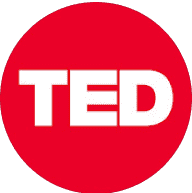Bizarre travelling flame discovery
Steve Mould・13 minutes read
Lighter fluid manipulation creates continuous flame rings, with designs by Rudy Stevens and Oscar Morris optimizing trough variables for sustained performance. Excitable mediums like the ring of fluid exemplify complex patterns emerging from simple rules, with potential applications in areas like forest fires and educational programs offered by Jane Street for students interested in technology and problem-solving, regardless of their background.
Insights
- Lighter fluid poured into a ring-shaped trough creates a sustained flame due to the evaporation of the fluid creating a ring of vapor that reignites as it completes a circuit, showcasing the characteristics of an excitable medium.
- The potential for perpetual burning in a ring-shaped forest is explored, with calculations determining the necessary circumference for continuous combustion, demonstrating the intricate patterns and behaviors that emerge from simple rules in excitable mediums akin to cellular automata.
Get key ideas from YouTube videos. It’s free
Recent questions
How does lighter fluid create a sustained flame?
Lighter fluid poured into a ring-shaped trough creates a flame that goes round and round. The sustainability of the flame is explained by the evaporation of the lighter fluid, creating a ring of vapor that reignites as it completes a circuit. This continuous movement of the flame is due to the characteristics of the lighter fluid as an excitable medium, which allows for the unique behavior of the flame to persist.
What is the optimal trough width for sustained flames?
The optimal trough width for sustained flames is found to be five millimeters. Through experimentation and design adjustments, it was discovered that varying opening sizes in the trough can affect the burn duration of the flame. A width of five millimeters allows for the flame to continue burning in a sustained manner, showcasing the importance of trough dimensions in manipulating flame performance.
How are excitable mediums related to cellular automata?
Excitable mediums, such as the ring of lighter fluid creating a sustained flame, are compared to cellular automata in the study. Excitable mediums exhibit complex patterns emerging from simple rules, similar to how cellular automata showcase intricate patterns based on basic rules. This comparison highlights the fascinating behavior of excitable mediums and their resemblance to the patterns seen in cellular automata systems.
What educational programs does Jane Street offer?
Jane Street, a quantitative trading firm, offers educational programs in New York and London for pre-university and university students. These programs focus on topics like mathematical theory, programming, and statistics, catering to individuals from any background with a passion for technology and problem-solving. The programs aim to provide learning opportunities in trading techniques using machine learning, distributed systems, and statistics, with applications closing in a few weeks. It is emphasized that a finance background is not required for applying to these educational programs.
How does the design of a trough affect flame behavior?
The design of the trough, such as a semi-circular cross-section, can affect flame behavior in unique ways. For example, a semi-circular trough design can lead to two flames circling simultaneously, showcasing the impact of trough shape on flame movement. Design adjustments, like varying opening sizes and trough width, play a crucial role in manipulating flame performance and behavior. This experimentation with trough designs highlights the importance of design variables in creating distinct flame patterns and movements.
Related videos

Jimmy Kimmel Live
David Blaine Magic Tricks on Jimmy Kimmel Live PART 2

Superheroes of Science
Convection with Smoke

Class 9 Learn With Mansi
Class 9 Maths | Chapter 13 | Introduction | Surface Areas And Volumes | NCERT

Steve Mould
Piezoelectricity - why hitting crystals makes electricity

WIRED
How This Guy Makes Mesmerizing Fluid Sculptures | Obsessed | WIRED
Summary
00:00
"Ring-shaped flames manipulated by excitable mediums"
- Lighter fluid poured into a ring-shaped trough creates a flame that goes round and round.
- Excitable mediums are explored, leading to designs that manipulate flames in unique ways.
- Rudy Stevens designed a cap for a small ecosystem using lighter fluid, sparking further experimentation.
- Oscar Morris designed a CAD file to adjust trough variables for optimal flame performance.
- Trough width of five millimeters is found to be optimal for sustained flame, with varying opening sizes affecting burn duration.
- A semi-circular cross-section trough design leads to two flames circling simultaneously.
- The flame's sustainability is explained by the evaporation of lighter fluid creating a ring of vapor that reignites as it completes a circuit.
- The ring of lighter fluid exemplifies an excitable medium, with characteristics that explain the flame's continuous movement.
- Excitable mediums are compared to cellular automata, showcasing complex patterns emerging from simple rules.
- The potential for continuous forest fires in a ring-shaped forest is explored, with calculations revealing the necessary circumference for perpetual burning.
12:16
"Quantitative trading firm offers educational programs"
- Jane Street, a quantitative trading firm, sponsors the video and offers educational programs in New York and London for pre-university and university students, focusing on topics like mathematical theory, programming, and statistics, open to individuals from any background with a passion for technology and problem-solving.
- The programs aim to provide opportunities for learning about trading techniques using machine learning, distributed systems, and statistics, with applications closing in a few weeks, emphasizing that a finance background is not required for applying.




